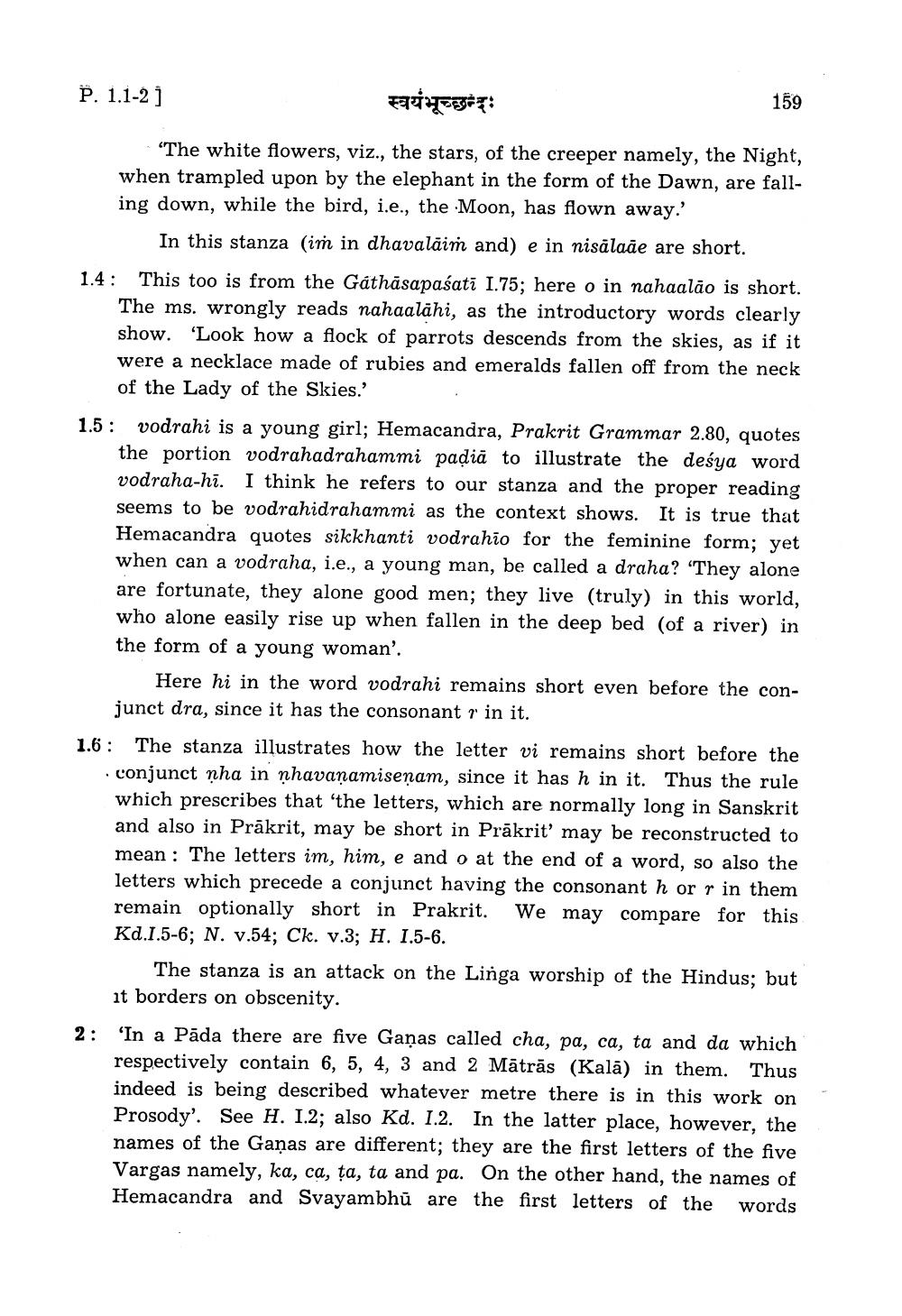________________
P. 1.1-2]
1.4:
1.5:
स्वयंभूच्छन्दः
"The white flowers, viz., the stars, of the creeper namely, the Night, when trampled upon by the elephant in the form of the Dawn, are falling down, while the bird, i.e., the Moon, has flown away.'
In this stanza (im in dhavalaim and) e in nisälaãe are short.
This too is from the Gathasapaśati 1.75; here o in nahaalão is short. The ms. wrongly reads nahaalahi, as the introductory words clearly show. 'Look how a flock of parrots descends from the skies, as if it were a necklace made of rubies and emeralds fallen off from the neck of the Lady of the Skies.'
1.6:
2:
159
vodrahi is a young girl; Hemacandra, Prakrit Grammar 2.80, quotes the portion vodrahadrahammi paḍia to illustrate the deśya word vodraha-hi. I think he refers to our stanza and the proper reading seems to be vodrahidrahammi as the context shows. It is true that Hemacandra quotes sikkhanti vodrahio for the feminine form; yet when can a vodraha, i.e., a young man, be called a draha? "They alone are fortunate, they alone good men; they live (truly) in this world, who alone easily rise up when fallen in the deep bed (of a river) in the form of a young woman'.
Here hi in the word vodrahi remains short even before the conjunct dra, since it has the consonant r in it.
The stanza illustrates how the letter vi remains short before the conjunct nha in nhavanamisenam, since it has h in it. Thus the rule which prescribes that 'the letters, which are normally long in Sanskrit and also in Prakrit, may be short in Prakrit' may be reconstructed to mean: The letters im, him, e and o at the end of a word, so also the letters which precede a conjunct having the consonant h or r in them remain optionally short in Prakrit. We may compare for this Kd.I.5-6; N. v.54; Ck. v.3; H. 1.5-6.
The stanza is an attack on the Linga worship of the Hindus; but it borders on obscenity.
'In a Pāda there are five Gaṇas called cha, pa, ca, ta and da which respectively contain 6, 5, 4, 3 and 2 Mātrās (Kalā) in them. Thus indeed is being described whatever metre there is in this work on Prosody'. See H. 1.2; also Kd. I.2. In the latter place, however, the names of the Gaņas are different; they are the first letters of the five Vargas namely, ka, ca, ta, ta and pa. On the other hand, the names of Hemacandra and Svayambhu are the first letters of the words




